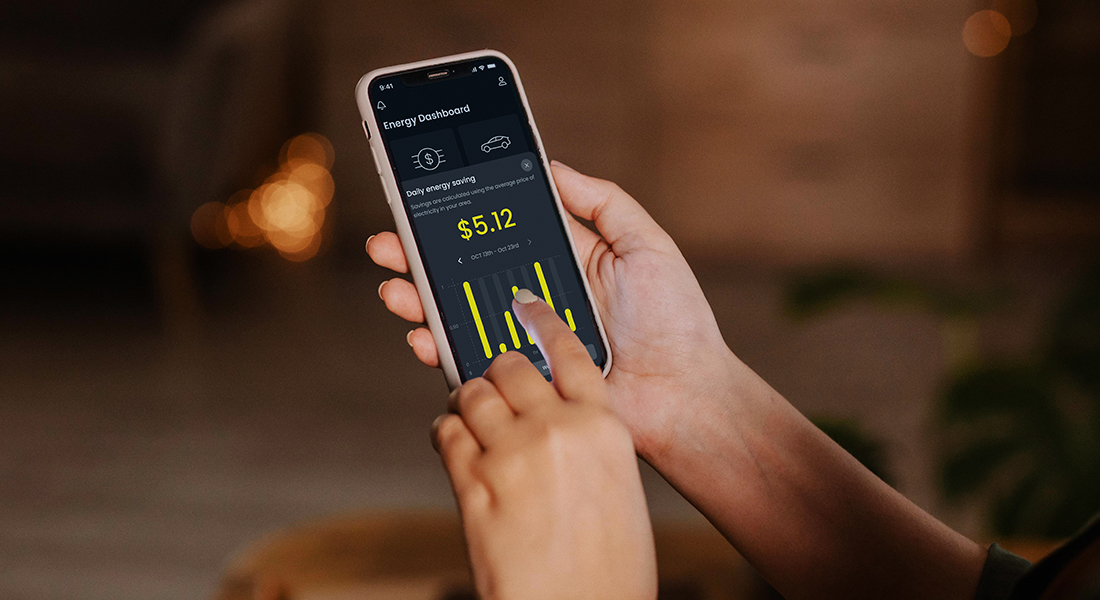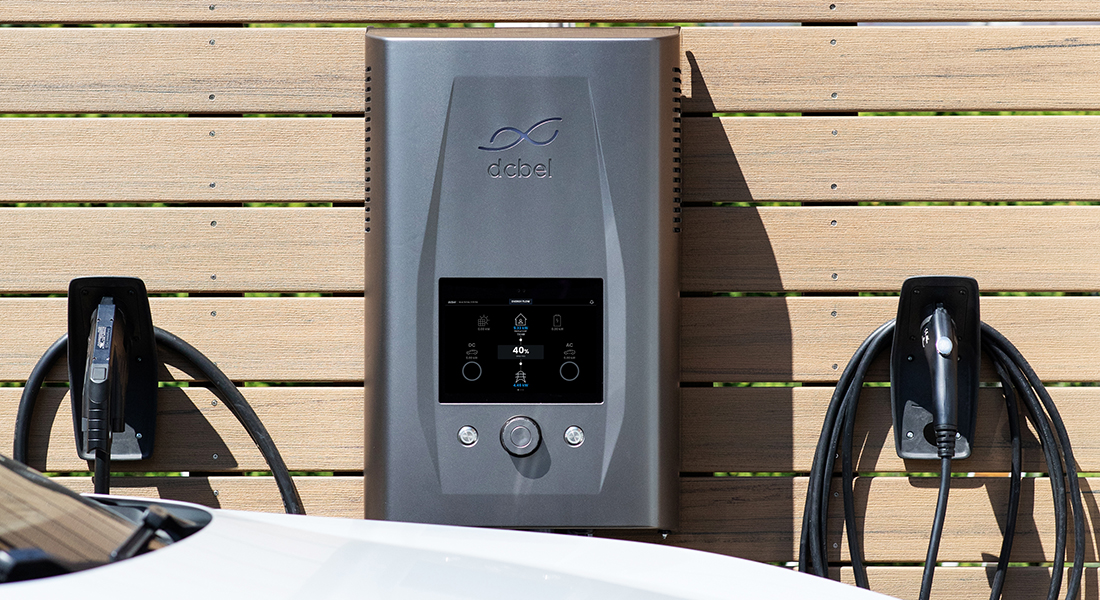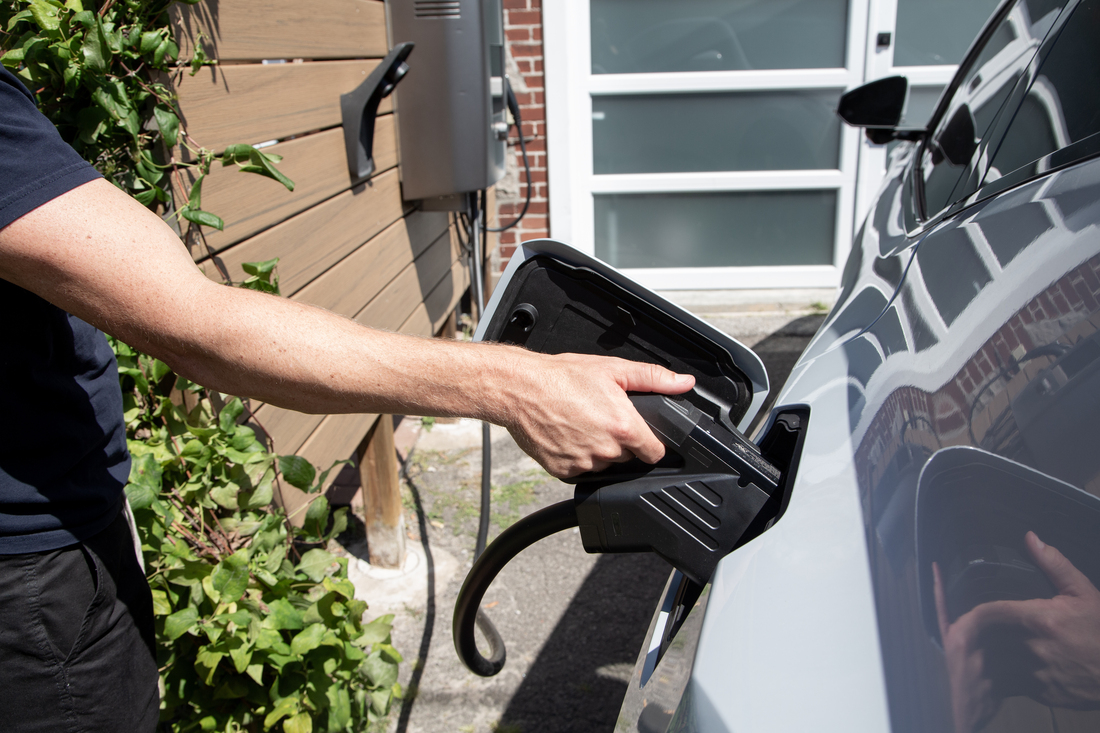It’s a hot summer evening. The lights flicker, then cut out. Suddenly, no A/C, no fridge, no wifi … your home is plunged into darkness. But outside, in the driveway, your EV holds a lifeline: a massive battery capable of powering your home. So your first instinct is to shop for a bidirectional charger.
The idea sounds promising, but even at this early stage, it’s clear that bidirectional charging isn’t the game-changer it’s been hyped up to be. It’s likely to fall short of what homeowners need because it’s not future-proof. So before jumping in as an early adopter, it’s worth asking what future-proof means, and we’re here to help you understand.
The Promise of Bidirectional Chargers
Bidirectional chargers are often described as technology that turn your EV into a battery on wheels. They let your EV supply power back to your house during a grid outage. On paper, they’re brilliant. In practice, they’re the first step toward energy independence, but not the full journey.
Imagine plugging in your EV during a blackout. The lights snap back on. Your fridge hums again. Relief washes over you. But how long will it last? If the EV is your only backup power source, it can drain quickly, leaving you without electricity and a way to get around.
The promise of bidirectional chargers shines brightest when it’s not limited to blackouts. A complete solution encompasses the capability to send energy back to the grid so you can earn, making sure your EV has enough energy to power your home to avoid peak utility rates, and a fast charging time.
But, at this point, we’re not talking about just a bidirectional charger anymore. We’re talking about a home energy station that positions bidirectional chargers, with all the benefits listed above, as one feature of an energy ecosystem that will form a home microgrid. This microgrid will allow you to generate, store, and consume energy in the most efficient and cost-effective way possible.
Why do you need a microgrid? I’m glad you asked.
Why Bidirectional Chargers Alone Fall Short
The US electrical grid is showing its age. In its July 2025 report, the Department of Energy warned that an additional 100 gigawatts of peak-hour supply will be needed by 2030 to avoid widespread grid outages. That warning was echoed in households across the country, where families are already paying more for less reliability. Electricity rates rose 6.7% between June 2024 and June 2025, outpacing inflation and adding an extra $162 annually for the average household. Since 2021, nationwide rates have surged by 34%, tacking on more than $500 a year to the average family. In California, Maryland, Connecticut, Maine, and Washington, DC, the increases have been even sharper, between 29% and 39%.
And then there’s climate change. Heatwaves, wildfires and hurricanes are putting the grid under unpredictable and relentless stress. A Climate Cosmos report makes it clear: grid outages caused by extreme weather aren’t just more frequent, they’re lasting longer. In California, families displaced by wildfires have reported going weeks without reliable electricity. In Louisiana, residents after Hurricane Ida recalled sitting in sweltering homes, watching their food spoil, with no way to recharge phones to call for help. When the grid fails, the essentials of modern life, like cooling, refrigeration, and communication, collapse with it.
Electricity rates rose 6.7% between June 2024 and June 2025, outpacing inflation and adding an extra $162 annually for the average household.
This is why your bidirectional charger should be capable of becoming a part of your home microgrid. Some communities are responding to the energy crisis by turning to microgrids. These solutions allow neighborhoods to operate independently during disasters, bypassing fragile transmission lines and keeping the lights on when the central grid falters. But for households relying on bidirectional chargers alone, energy resilience is often out of reach.
Another challenge is poor integration. Even though EV adoption and home batteries are climbing to record highs, most homes still lack systems to coordinate these assets. Without smart energy management, energy can be wasted or misused. The IRENA COP28 report highlights how demand-side management, which includes things like automatically running appliances when electricity is cheaper or adjusting heating and cooling systems to reduce strain on the grid, are crucial for efficiency and energy resilience. Yet, too often, homes remain a jumble of uncoordinated devices.
These solutions [microgrids] allow neighborhoods to operate independently during disasters, bypassing fragile transmission lines and keeping the lights on when the central grid falters.
And relying on a single source of power is always a gamble. A bidirectional charger without solar integration or a home battery leaves you exposed. Energy analysts Isaac Orr and Mitch Rolling point out that DOE modeling shows regions like SPP (Southwest Power Pool) and PJM (Pennsylvania-New Jersey-Maryland) South could face hundreds of hours of blackouts annually due to rising demand and reduced dispatchable capacity. Families who try to depend on nothing but their car battery find themselves facing an impossible choice: keep the house running or save enough charge to drive.
An Agile Electrification study offers a vivid comparison. Homes with solar panels alone cut their grid imports by 26%. Add battery storage to the mix and the reduction jumps to 65% — a 2.6 times improvement in grid independence. The takeaway? Getting a bidirectional charger is a small piece of the resilience puzzle. Without solar or batteries, it’s like trying to light a room with a single candle when you could flip on the whole circuit. It makes a difference, but pairing it with the right tools unlocks its full potential.
What Real Energy Resilience Looks Like
Real energy resilience is about coordination. Imagine a home where solar panels generate electricity through the day, storing any surplus in a home battery for later use. Your EV adds another layer of battery backup, ready to step in when needed. Overseeing it all is a smart energy management system that knows when to pull from the panels, when to tap the home battery and when to call on the EV.

In this scenario, energy doesn’t just flow, it’s orchestrated. The house can ride through a grid outage without interruption, while also shaving peak demand to reduce bills during normal times. Unlike most current bidirectional chargers, which make you choose between blackout protection or peak shaving, this integrated approach offers both at once.
Meet Ara: Your Home’s Energy Brain
This vision of seamless coordination is exactly what dcbel Ara delivers. Ara is a Home Energy Station designed to move beyond the limits of bidirectional chargers, weaving together solar integration, home battery storage, EV charging and smart energy management in one intelligent system.
During a grid outage, Ara combines solar power with home battery backup, preventing your EV from draining unnecessarily. With automatic islanding and grid outage detection, the transition to backup power is designed to be smooth, minimizing disruption once the grid has gone down. Its DC-coupled architecture and dynamic load balancing ensure energy flows exactly where it’s needed, when it’s needed. And because Ara operates independently of communication lines, it continues to provide full home backup even if the grid or internet is compromised.
Because Ara operates independently of communication lines, it continues to provide full home backup even if the grid or internet is compromised.
The system also gives homeowners control. Through a simple app interface, you can manage your home’s energy proactively, whether you want to prioritize backup power, take advantage of demand response programs, or simply monitor usage in real time. Because Ara can draw from solar, home battery storage and your EV interchangeably, no single failure can bring the system down.

In short, Ara makes bidirectional chargers part of a comprehensive solution. It’s not just about keeping the lights on — it’s about creating layered energy resilience and lasting energy independence.
The Bottom Line
V2H technology is an important breakthrough. It represents a step toward energy independence and a vision of grid independence. But on its own, V2H is only a short-term fix. Without solar integration, home battery storage, and smart energy management, it’s like having a lifeboat without oars — you’ll float for a while, but you won’t get far.

Real energy resilience comes from systems working together: solar panels harvesting the sun, home batteries storing excess energy, EVs stepping in as mobile reserves, and automation ensuring everything runs in harmony. That’s the pathway to blackout protection, full home backup, and true energy independence.
Ara delivers exactly that. Bidirectional chargers are the beginning. Energy independence is the destination. Ara is the roadmap.


